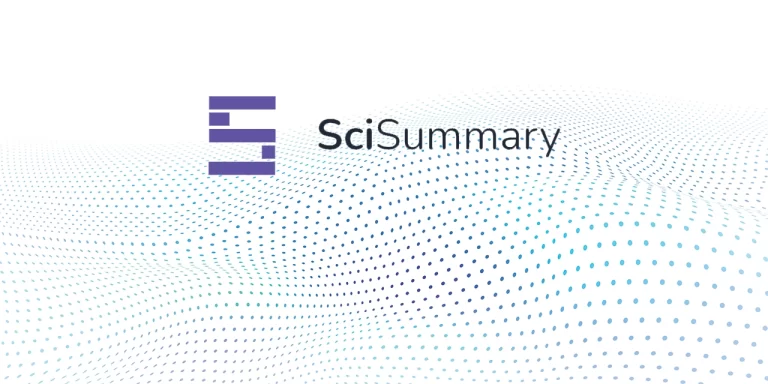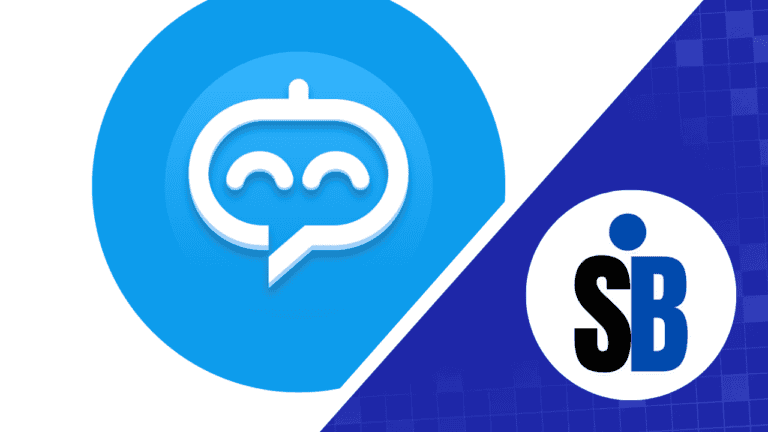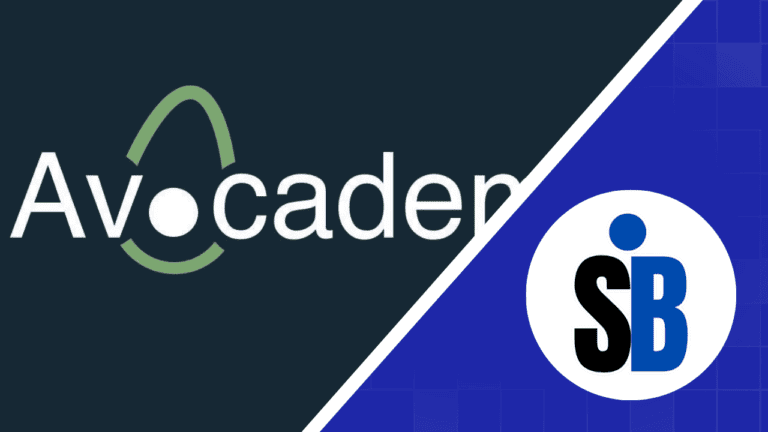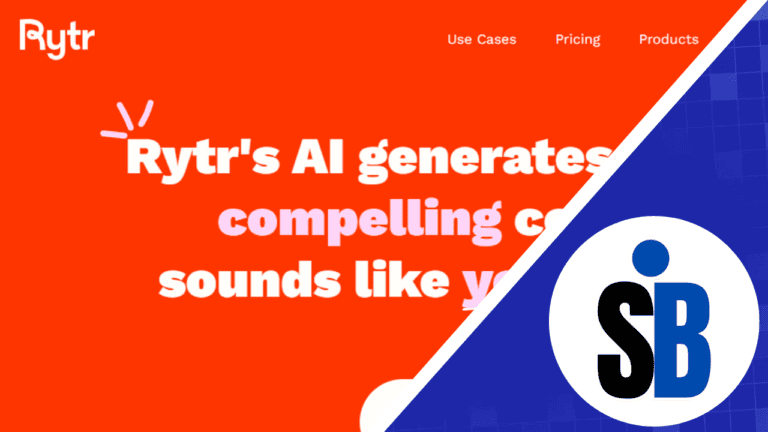If you’re considering webinars but are unsure of their effectiveness or whether they are a worthwhile investment, you’re not alone.
Many businesses face similar doubts about using webinars for marketing and other needs.
This article aims to address your concerns by providing clear insights into how webinars can effectively generate leads, engage your target audience, and support your business growth.
Let’s examine the role of webinars in enhancing your marketing strategy.
TL;DR
The short answer is yes, webinars actually work. 73% of marketing and sales teams consider webinars a premier avenue for generating high-quality leads.
Webinars are still a highly effective tool for businesses looking to engage their target audience, generate leads, and enhance their marketing strategy.
They offer real-time interaction, valuable content, and the ability to showcase expertise through educational webinars, product demonstrations, and live video presentations.
With the right webinar software and planning, webinars can foster strong connections with attendees, making them a worthwhile investment for driving business growth and achieving marketing goals.
Whether you’re aiming for lead generation or brand awareness, webinars can play a crucial role in your marketing efforts.
Do Webinars Actually Work? Understanding Webinar Effectiveness
Introduction to Webinars
Webinars are an essential part of a marketing strategy, allowing businesses to connect with their target audience, generate leads, and establish thought leadership.
A webinar is a live or pre-recorded online presentation that enables real-time interaction with attendees. With the right webinar software, businesses can host engaging and informative webinars that cater to the needs of their audience.
Whether it’s an educational webinar, a product demonstration, or a panel discussion, webinars provide a powerful tool for businesses to showcase their expertise and build relationships with potential clients.
Types of Webinars

There are various types of webinars that businesses can use to achieve their marketing goals. Educational webinars are designed to educate attendees on a specific topic, while evergreen webinars are pre-recorded and can be accessed on-demand.
Sales webinars, on the other hand, are focused on promoting a product or service and generating leads. Panel discussions and product demonstrations are also popular types of webinars that can be used to engage with attendees and showcase expertise.
By choosing the right type of webinar, businesses can create a valuable and engaging experience for their target audience.
Key Metrics for Webinar Success
To determine the usefulness of a webinar, key performance indicators (KPIs) must be tracked.
These metrics provide insights into the webinar’s impact, effectiveness, and overall return on investment (ROI). Below are essential KPIs to monitor:
1. Registration and Attendance Rates
Registration and attendance rates are fundamental metrics. The average webinar has a registration to attendance conversion rate of around 40-60 minutes.
They help quantify the initial interest and actual turnout for the webinar.
Metric | Description |
|---|---|
Registration Rate | The number of people who register for the webinar. |
Attendance Rate | The percentage of registrants who attend the webinar. |
For instance, boosting registrations and sending stronger, more frequent email notifications to potential attendees can significantly increase webinar attendance (Demio).
2. Engagement Rate
Engagement rate measures how actively participants engage with the webinar content. This includes actions such as participating in polls, asking questions, and utilizing chat functions.
High engagement rates indicate that the audience found the content valuable and interactive.
3. Conversion Rate
Conversion rate tracks how many attendees took a desired action post-webinar, such as signing up for a service, purchasing a product, or becoming a qualified lead.
According to Hubilo, 73% of marketing and sales teams consider webinars a premier avenue for generating high-quality leads.
Metric | Description |
|---|---|
Conversion Rate | The percentage of attendees who complete the desired action post-webinar. |
Importance of Attendee Engagement
Engaging audiences is critical to the success of a webinar.
Engaging attendees before, during, and after the event fosters a connection, encourages interaction, and improves the likelihood of achieving webinar goals (Livestorm).
Pre-Webinar Engagement
Strategies for pre-webinar engagement include:
- Sending teaser content to pique interest.
- Utilizing social media to create anticipation.
- Sending reminder emails and engaging potential attendees early on.
In-Webinar Engagement
During the webinar, focus on interactive elements such as:
- Engaging polls and Q&A sessions.
- Interactive content such as quizzes and surveys.
- Using multimedia like videos and infographics to maintain interest.
Post-Webinar Engagement
After the webinar, continue the interaction to foster relationships and drive conversion. Effective post-webinar strategies include:
- Sending follow-up emails with a summary of the webinar.
- Sharing the webinar recording for those who missed it.
- Offering related resources and inviting attendees to future webinars.
By focusing on these metrics and engagement strategies, businesses can better understand the usefulness of webinars and continually optimize for improved results.
Hosting Successful Webinars

Effective webinars hinge on meticulous planning and execution.
From pre-webinar preparation to post-webinar engagement, each stage is vital to ensuring the success of the event.
Here’s a breakdown of strategies for hosting successful webinars.
Pre-Webinar Preparation
Setting the foundation for a successful webinar involves several crucial steps:
- Define the Target Audience: Understanding the demographics, buyer’s journey, and interests of the audience is crucial. Tailor the content to meet their needs and expectations (Livestorm).
- Select Relevant Topics: Choose topics that add value to your audience. Clear, valuable topics are key to attracting and retaining participants.
- Webinar Planning: Thorough webinar planning helps in organizing content effectively, ensuring that the presentation flows smoothly and meets the audience’s expectations.
- Invite Valuable Speakers: Engaging speakers who bring expertise and appeal to your target audience can significantly enhance the webinar’s attractiveness.
- Choose the Best Platform: Selecting the best webinar software with robust engagement features and seamless functionality is crucial for a smooth experience.
- Effective Promotion: Use personalized reminder emails to drive attendance. Emails that come from a person involved in the webinar are particularly effective (ON24). Early registrants can be kept engaged with pre-event content like related blog posts and e-books (Cognism).
Creating a Successful Sales Pitch
A successful sales pitch is crucial for any webinar, especially those focused on generating leads and sales.
To create an effective sales pitch, businesses need to understand their target audience and tailor their message accordingly. The pitch should be clear, concise, and compelling, highlighting the benefits and value of the product or service being promoted.
By using storytelling techniques, social proof, and scarcity tactics, businesses can create a sales pitch that resonates with their audience and drives conversions.
Additionally, businesses should focus on providing valuable content and insights, rather than just pushing their product or service.
Hosting Your First Webinar
Hosting a webinar can be a daunting task, especially for those who are new to webinar marketing. To ensure a successful first webinar, businesses should start by choosing a reliable webinar platform and planning their content carefully.
They should also promote their webinar through social media, email marketing, and other channels to attract a large audience.
On the day of the webinar, businesses should be prepared to handle technical issues and engage with attendees through chat features and Q&A sessions.
By following best practices and being prepared, businesses can host a successful first webinar that sets them up for future success.
Webinar Execution Tips
Conducting the webinar efficiently requires attention to detail and focus on keeping the audience engaged.
- Interactive Content: Utilize features of the webinar platform to interact with participants in real-time. Polls, Q&A sessions, and live chats can keep the audience engaged.
- Clear and Engaging Presentation: Ensure that slides and content are visually appealing and informative. Utilize bullet points, diagrams, and videos to break up text-heavy slides. A clear and engaging video presentation can significantly enhance the overall experience by conveying information in a more personal and impactful way.
- Manage Time Effectively: Stick to the allotted time for each segment of the webinar. This includes the introduction, main content, and Q&A session (webinar duration strategy).
- Technical Readiness: Ensure that all technical aspects, such as audio, video, and internet connectivity, are tested and functioning properly before the event. This reduces the likelihood of disruptions during the webinar.
Best Practices for Webinar Delivery
Delivering a webinar requires a combination of technical skills, presentation skills, and engagement strategies.
To ensure a smooth and engaging webinar experience, businesses should invest in high-quality equipment, such as microphones and cameras. They should also practice their presentation beforehand to ensure a confident and polished delivery.
During the webinar, businesses should engage with attendees through chat features, Q&A sessions, and polls, and provide valuable content and insights that resonate with their audience.
By following these best practices, businesses can create a webinar experience that is both informative and engaging.
Overcoming Common Challenges
Despite the many benefits of webinars, there are common challenges that businesses may face when hosting a webinar.
Technical issues, such as internet connectivity problems or audio delays, can be frustrating and disrupt the flow of the webinar. Additionally, businesses may struggle to engage with attendees, especially if they are not used to presenting in a virtual environment.
To overcome these challenges, businesses should invest in reliable webinar software, practice their presentation beforehand, and have a backup plan in place in case of technical issues.
By being prepared and flexible, businesses can overcome common challenges and host a successful webinar that achieves their marketing goals.
Post-Webinar Engagement Strategies
Post-webinar engagement is essential to reinforce the webinar’s value and maintain participant interest.
- Follow-Up Emails: Send thank-you emails that include a link to the webinar recording and additional resources. Personalized emails help in maintaining a connection with attendees.
- Provide Additional Content: Share related articles, e-books, or previous webinars to keep the audience engaged. This helps in building a community around your webinars and provides continuous value.
- Gather Feedback: Collect feedback through surveys or polls post-webinar to understand the strengths and areas for improvement. This feedback is vital for enhancing future webinars.
- Analyze Metrics: Utilize the best webinar software’s analytics to interpret engagement metrics, attendance data, and participant feedback. This data-driven approach enables continuous improvement.
- Sharing Insights: Emphasize the importance of sharing insights during and after webinars. Exchanging valuable information and feedback can enhance professional connections and networking opportunities, fostering collaboration and potentially leading to future business partnerships.
By following these strategies for pre-webinar preparation, webinar execution, and post-webinar engagement, you can significantly enhance the usefulness of webinars in achieving your business goals.
For more tips on hosting successful webinars, check out our additional resources on webinar hosting tips and webinar vs seminar.
Choosing the Best Webinar Software
Selecting the right webinar software is crucial for ensuring a seamless and successful webinar experience.
Professionals seeking the best platform should consider several important features and compatibility with other tools used in their business operations.
Features to Look For
When selecting webinar software, it’s important to look for features that enhance both the presenter and attendee experience while providing robust analytics for organizers.
Key features to consider include:
1. Ease of Use: The platform should be user-friendly for both presenters and attendees. A simple interface facilitates smooth navigation and operation during the webinar hosting tips.
2. Quality of Audio and Video: High-quality audio and video ensure that the content is delivered clearly and professionally. Poor quality can disrupt the flow and understanding of the webinar.
3. Audience Interaction: Engaging with the audience through live Q&A sessions, real-time polls, or quizzes can keep attendees interested and provide valuable insights for future webinars (Contrast).
4. Robust Analytics: Detailed analytics help organizers track key performance indicators (KPIs), allowing them to measure the success of the webinar and identify areas for improvement.
Using the right tools can optimize content and improve overall engagement.
5. Customization: The ability to tailor the content to meet the specific needs of the target audience can significantly enhance the effectiveness of the webinar (Contrast).
Here is a table summarizing these key features:
Feature | Importance |
|---|---|
Ease of Use | Facilitates smooth operation |
Quality of Audio/Video | Ensures clear and professional delivery |
Audience Interaction | Keeps attendees engaged |
Robust Analytics | Tracks KPIs for measuring success |
Customization | Enhances relevance and effectiveness |
Platform Integration Capabilities
Integration capabilities are another crucial aspect to consider when choosing webinar software. The platform should seamlessly integrate with other tools and systems used by the organization.
This can include:
CRM Integration: Integrating with Customer Relationship Management (CRM) software allows for the automatic capture of attendee information, helping to streamline follow-up and lead nurturing processes (Contrast).
Email Marketing Software: Integration with email marketing tools can facilitate the promotion of webinars and ensure timely communication with registrants. This can include sending out reminders and post-webinar follow-ups.
Calendar Integration: Synchronization with calendar applications ensures that webinars are added to the attendees’ calendars without any hassle, reducing the chances of forgetting the event.
Social Media Platforms: Integration with social media allows for wider promotion and increased reach, attracting a larger audience to the webinar.
For more tips on how to effectively use webinar tools, check out our article on webinar tool requirements.
Effective integration ensures a smoother and more efficient workflow, enhancing the overall webinar usefulness. Here’s a table summarizing key integration capabilities:
Integration Capability | Benefit |
|---|---|
CRM Integration | Streamlines follow-up and lead nurturing |
Email Marketing Software | Facilitates promotion and communication |
Calendar Integration | Reduces no-shows, ensures scheduling |
Social Media Platforms | Increases reach and audience size |
Considering these features and integration capabilities will help ensure that the chosen webinar software meets the business needs and provides an optimal experience for both presenters and attendees.
We have already done the testing put together the ultimate list of best webinar software that have all the features needed to run a successful webinar.
Optimizing Webinar Attendance
Timing and Promotion Strategies
Optimizing webinar attendance begins with choosing the right time and effective promotion tactics.
Timing: Selecting the optimal time for your webinar ensures maximum attendance. Generally, mid-week days such as Tuesday, Wednesday, or Thursday are considered best, with most attendees preferring late mornings or early afternoons.
Promotion Strategies:
- Early Registration Content: Provide early registrants with content related to the upcoming webinar, such as past event highlights or related blog posts (ON24).
- Reminder Emails: Send personalized emails from a person involved in the webinar, as this has shown effectiveness in increasing attendee engagement (ON24).
- Exclusive Content and Incentives: Incentivize participation with prizes or exclusive content to motivate attendees.
- Social Media Promotion: Use social media platforms to create buzz and direct traffic to your registration page.
- Partnerships: Collaborate with industry influencers or partners to broaden your reach.
- Effective Subject Line: Craft an effective subject line in your webinar invitation emails to attract attendees. Use clear, captivating language, such as framing the subject line with brackets or posing engaging questions, to increase open rates and drive more participants to the event.
Engagement Elements for Audience Interaction
Engaging the audience during the webinar is crucial for its success and can significantly improve attendees’ perception of the webinar’s usefulness.
Interactive Elements:
- Live Q&A Sessions: Allow attendees to ask questions in real-time and provide direct responses. This can address doubts and build trust.
- Real-Time Polls: Conduct polls during the webinar to collect audience opinions and make them feel involved.
- Quizzes: Include quizzes to make the session more dynamic and engaging.
- Chat Features: Enable a chat function where participants can interact with each other and the host.
Benefits:
- Keeps attendees focused and engaged.
- Provides valuable insights for future webinars.
- Generates higher quality leads through interaction.
- Enhances the overall experience by respecting those paying attention, making them feel valued and acknowledged.
Sample Engagement Activity:
Activity | Engagement Level |
|---|---|
Q&A Sessions | High |
Real-Time Polls | Medium |
Quizzes | Medium |
Chat Features | High |
Utilizing a mix of these engagement elements ensures a lively and interactive session, enhancing the overall effectiveness of the webinar.
Implementing these strategies and incorporating interactive elements significantly boosts the usefulness of webinars, leading to increased attendance and more satisfactory outcomes.
Measuring Webinar Success

Measuring the success of a webinar is vital for understanding its effectiveness and optimizing future sessions.
This section explores essential Key Performance Indicators (KPIs) and how to interpret these metrics for improved outcomes.
Essential KPIs to Track
To gauge a webinar’s success, several KPIs are crucial:
- Registration vs. Attendance Rate: This metric compares the number of registrants to actual attendees. On average, the conversion rate ranges between 35% to 45% (Hubilo).
Metric | Average Percentage |
|---|---|
Registrants to Attendees | 35% – 45% |
- Attendee Duration: Understanding how long attendees stay engaged is essential. A high drop-out ratio, typically between 20% and 40%, could indicate issues with content or delivery (Hubilo).
Metric | Average Drop-out Ratio |
|---|---|
Attendee Drop-out Ratio | 20% – 40% |
- Engagement Levels: Metrics like chat participation, question submissions, and poll responses indicate how engaged the audience is during the webinar. Higher engagement levels often correlate with a more successful webinar.
- Post-Webinar Actions: Attendee intent signals, such as purchasing decisions or demo requests, collected through feedback forms offer invaluable insights into the webinar’s impact (Hubilo).
- Replay and On-Demand Requests: The number of webinar replays and on-demand accesses can reveal the long-term value and relevance of the content presented.
- Insights from Last Webinar: Reflecting on the insights gained from the last webinar can inform decisions about which sessions to attend or skip in the future, improving engagement and effectiveness in networking for upcoming events.
Interpreting Metrics for Improvement
Proper analysis of these KPIs can help identify areas of improvement:
- Low Attendance Rate: If the attendance rate is low despite high registrations, this might indicate issues with marketing campaigns or the need for more effective webinar hosting tips. Enhancing reminder emails and creating compelling promotional content could improve attendance.
- High Drop-out Ratio: A significant drop-out rate suggests that the content or presentation style needs improvement. Ensuring the webinar topic aligns with audience interests and incorporating interactive elements can retain attendees. For more ideas, refer to webinar duration strategy.
- Minimal Post-Webinar Actions: If attendees are not taking further actions like signing up for demos or making purchases, it may be necessary to reassess the clarity and persuasiveness of your call-to-actions. Tailoring content to meet audience needs better and building a sense of community can enhance engagement (Hubilo).
- Low Engagement Levels: If polls and Q&A sessions see low participation, this could be a sign that the audience is not fully engaged. Using more interactive learning methods and creative content delivery can keep the audience attentive.
By consistently tracking and interpreting these metrics, professionals can improve their webinar strategies and ensure their effectiveness.
Enhancing Lead Generation with Webinars
Webinars can be a powerful tool for generating qualified leads and securing conversions when executed effectively.
Two crucial strategies to enhance lead generation through webinars are tailoring content to audience needs and building a community around the webinars.
Tailoring Content for Audience Needs

Creating content that resonates with your target audience is essential for successful lead generation. Knowing your audience’s pain points, interests, and industry trends enables you to craft webinars that are both informative and relevant.
This ensures that attendees find value in the content, which increases engagement and the likelihood of conversion.
Recording and offering webinars as on-demand content can attract new leads by making the information accessible anytime, thereby enhancing lead generation opportunities.
Conducting surveys and gathering feedback from previous webinars can provide insights into what topics the audience finds most beneficial.
Additionally, leveraging data analytics from your webinar platform can help identify patterns in attendee behavior and preferences.
Key considerations for tailoring content:
- Identify Pain Points: Understand the challenges and needs of your audience.
- Industry Trends: Incorporate current trends and updates relevant to your audience’s industry.
- Feedback Loop: Regularly collect and analyze feedback to refine future webinar content.
By providing high-quality, engaging content, you can position your brand as an authoritative figure in your industry, thus fostering trust and encouraging attendees to consider your products or services.
Building a Community Around Webinars
Building a sense of community around your webinars can significantly enhance lead generation.
When attendees feel part of a community, they are more likely to engage with your content, share it with others, and participate in future webinars.
This ongoing engagement can increase brand loyalty and lead to higher conversion rates.
Strategies to build a community:
- Interactive Webinars: Incorporate Q&A sessions, polls, and live chat to encourage interaction during the webinar.
- Consistent Scheduling: Regularly scheduled webinars help establish a routine for your audience, making it easier for them to attend.
- Follow-Up Engagement: Engaging the audience before, during, and after the webinar is crucial (Livestorm). Utilize social media, email newsletters, and community forums to continue the conversation post-webinar.
Creating a community around webinars not only enhances brand awareness but also establishes your company as a thought leader.
This can lead to increased referrals and help in reaching more B2B buyers, ultimately serving as a way to form relationships with potential customers and drive sales leads through engaging and valuable content (Cognism).
Building a strong community around webinars involves prioritizing value delivery over traditional lead generation tactics.
This requires focusing on real value and entertainment for the audience, rather than merely capturing leads.
Doing so will foster a more loyal and engaged audience, enhancing the overall webinar usefulness and leading to better conversion rates.
Strategy | Purpose |
|---|---|
Identifying Pain Points | Understand challenges and needs |
Interactive Webinars | Encourage live interaction |
Consistent Scheduling | Establish routine attendance |
Follow-Up Engagement | Continue conversation post-webinar |
By adopting these strategies, professionals searching for the best webinar software for their business needs can ensure their webinars not only attract attendees but also generate high-quality leads that drive business growth.
Cloud Hosting Benefits for Webinars
Cloud hosting offers numerous advantages for hosting webinars, particularly in terms of scalability, cost efficiency, and enhanced security.
Understanding these benefits can help businesses choose the best webinar software to meet their needs.
Scalability and Cost Efficiency
One of the primary advantages of cloud hosting is its scalability. As opposed to traditional on-premise hosting, cloud solutions allow for seamless adjustments in storage, RAM, and CPU capacity.
This ensures that your webinar platform can easily handle increased demand as your audience grows.
For instance, cloud hosting allows you to quickly scale up the resources allocated to your webinar software during peak times and scale them back down during off-peak times (Clarity Ventures).
A stable internet connection is crucial to ensure a smooth webinar experience.
Technical preparations, including checking the reliability of the internet connection and ensuring devices are properly set up, are critical for minimizing disruptions and maintaining participant focus.
Benefit | Description |
|---|---|
Scalability | Dynamic adjustment of resources (Storage, RAM, CPU) to meet growing needs |
Cost Efficiency | Reduced maintenance costs, optimized resource usage, and faster deployment |
Cloud hosting is also cost-efficient. It reduces the need for significant capital investment in hardware and lowers maintenance costs.
By optimizing resource usage, cloud hosting ensures that you only pay for what you actually use.
This flexibility can significantly cut operational expenses and allow for quick deployment of projects and applications, making it ideal for businesses planning rapid growth.
Enhanced Security and Uptime

Security is another significant benefit of cloud hosting. Cloud-based solutions often boast enhanced security features compared to on-premise systems.
Data is stored in highly-protected offsite data centers with up-to-date security measures, spam filters, and protection against various threats such as viruses, malware, phishing, and spoofing (MailSafi).
This enhanced security helps ensure the integrity of your business email and data, making it a reliable choice for hosting webinars.
Security Feature | Description |
|---|---|
Data Protection | Stored in highly-protected offsite data centers |
Enhanced Measures | Up-to-date security features, spam filters, virus, malware, phishing, and spoofing protection |
Uptime is critical for webinars, where even short downtimes can disrupt the entire event.
Cloud hosting often promises superior uptime because the infrastructure is designed to handle failures and distribute loads efficiently.
This high availability ensures your webinars run smoothly, providing a reliable experience for attendees.
For those preparing to host a webinar, check out our webinar hosting tips and webinar tool requirements for best practices and essential features.
By leveraging the benefits of cloud hosting, companies can ensure their webinars are not only effective and engaging but also secure and cost-efficient.
Discover more about the effectiveness of webinars in 2025 and whether webinars actually work.
Educational Content Strategies
Effective educational content is essential for maximizing the webinar usefulness.
By integrating interactive learning methods and creative content delivery, professionals can ensure that their webinars not only engage participants but also lead to successful outcomes.
Interactive Learning Methods
Interactive learning methods are designed to actively involve attendees, making the learning process more engaging and effective.
Here are some methods to consider:
- Polls and Quizzes: Implementing live polls and quizzes during webinars can help keep participants engaged. These tools allow for real-time interaction and provide immediate feedback.
- Q&A Sessions: A dedicated Q&A segment encourages participants to ask questions, fostering a two-way communication channel between the presenter and the audience.
- Breakout Rooms: For webinars with smaller groups, breakout rooms can be used to facilitate more focused discussions and activities, mimicking a face-to-face learning environment.
- Interactive Whiteboards: Utilizing virtual whiteboards where participants can draw or write can make the session more collaborative.
- Live Webinar: Hosting a live webinar allows for direct engagement with the audience, facilitating real-time interaction through features like chat and polling tools. This format enables personal connections and immediate feedback, making it a valuable method for educating and building relationships with participants.
Using these methods helps to maintain attendee interest and promote a more dynamic learning experience.
Benefits of Creative Content Delivery
Creative content delivery is crucial for keeping participants engaged and minimizing distractions during webinars.
Different content types can cater to various learning styles, making the educational process more comprehensive.
- Multimedia Integration: Incorporating videos, animations, and infographics can make the content more vibrant and easier to understand. Visual aids are particularly effective in breaking down complex information.
- Real-World Examples: Using real-world examples and case studies makes the content relatable and practical. For instance, business content can provide practical vocabulary and academic language proficiency.
- Personalized Content: Tailoring content to meet the specific needs of your audience enhances engagement and retention. Personalized examples, such as customized social media posts, can be highly effective for adults learning new skills.
- Gamification: Introducing gamified elements, such as point scoring or competition, can make the learning experience more enjoyable and motivating.
According to The New York Times Licensing Group, different content types help minimize distractions and keep students engaged, especially in online learning environments.
By focusing on interactive learning methods and creative content delivery, webinars can become a powerful tool for education and engagement.
Frequently Asked Questions (FAQ) About Webinars
1. Do webinars actually work for lead generation?
Yes, webinars are highly effective for lead generation. They provide a platform to engage directly with your target audience, offer valuable content, and establish thought leadership. By capturing attendee information during registration, businesses can nurture leads and convert them into paying clients.
2. What are the disadvantages of a webinar?
While webinars are powerful tools, they come with challenges such as technical issues, audience engagement difficulties, and potential low attendance rates if not promoted well. Ensuring reliable webinar software, engaging content, and effective promotion strategies can mitigate these disadvantages.
3. Are live webinars really live?
Yes, live webinars are conducted in real time, allowing for immediate interaction between the host and attendees. This format offers opportunities for real-time feedback, Q&A sessions, and engagement through chat features, creating a dynamic and interactive experience.
4. Are webinars still effective in 2025?
Absolutely. As digital engagement continues to grow, webinars remain a relevant and effective marketing strategy in 2025. They facilitate direct interaction with a global audience, making them a valuable tool for businesses seeking to generate leads and build brand awareness.
5. How can I ensure high attendance for my webinar?
To boost attendance, choose an optimal time for your target audience, promote the webinar through social media and email marketing, and offer incentives for registration. Personalizing reminder emails and collaborating with industry influencers can also increase interest and participation.






